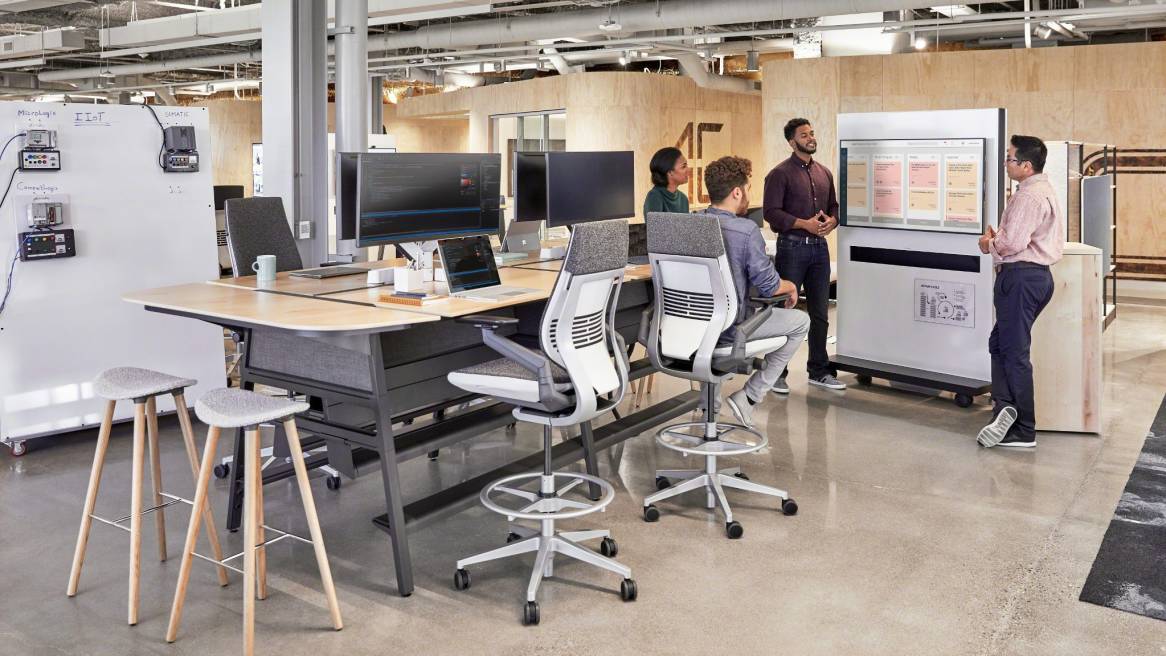A Day in the Life of an Agile Team
When it comes to agile, it’s all about the team.
The industrial internet of things (IIoT) is a way for makers to become more efficient, improve quality and control costs. Kim’s IIoT team is the engine behind turning those ideas into reality. They create platforms that allow Steelcase to collect facility data around the world and display it visually to help people make better decisions.
Kim’s team is made up of IT and business partners like industrial engineers. Over the last two-and-a-half years, they’ve been following agile principles to create better business results, faster. And, the lessons they’re learning from agile are being applied to teams well beyond the world of IT.
In order to keep up with their fast-paced style of work, Kim’s team needs to be able to move seamlessly from activity to activity throughout the day, all while staying in flow. Their new team-based workspace designed to support agile helps remove barriers to their progress. In fact, when Steelcase IT teams moved in about a year ago, they increased the amount they got done by 36 percent. (For more information on this, read Transforming IT)
To understand how their place supports the fluid nature of agile work, we’ve shared what a typical day looks like for Kim and her team. Follow them in their space designed to foster a more agile culture, help them move faster, test and execute on new ideas and get closer to their customers.
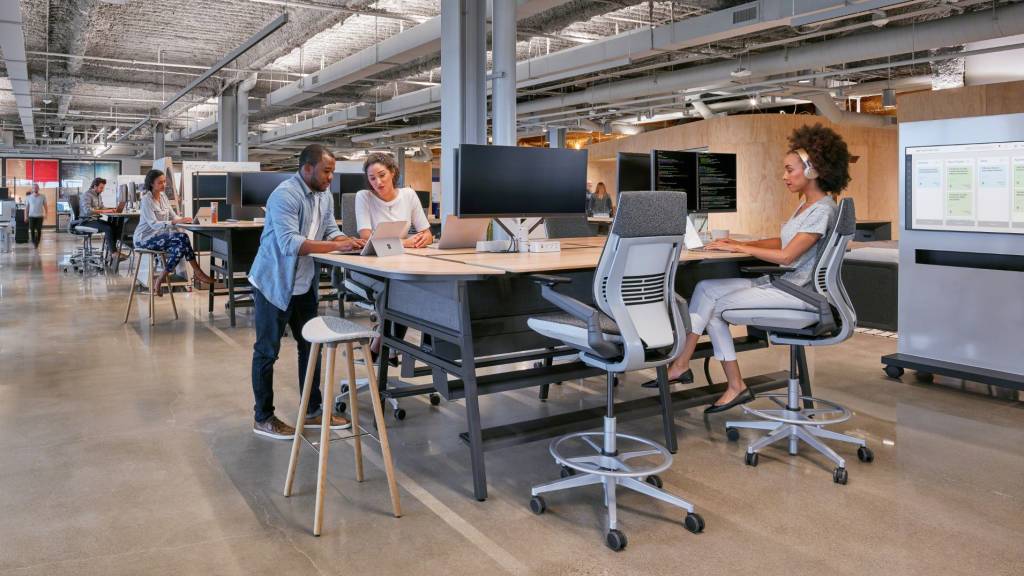
8:00 AM – Starting the Day
Kim’s team starts every day together in the team studio — checking in with one another and discussing what’s on their plate for the day. The close proximity to teammates makes it easy to get questions answered without scheduling meetings or waiting for email responses. Sometimes she retreats to a workstation in the back of the studio to focus, yet remain within earshot of the team.
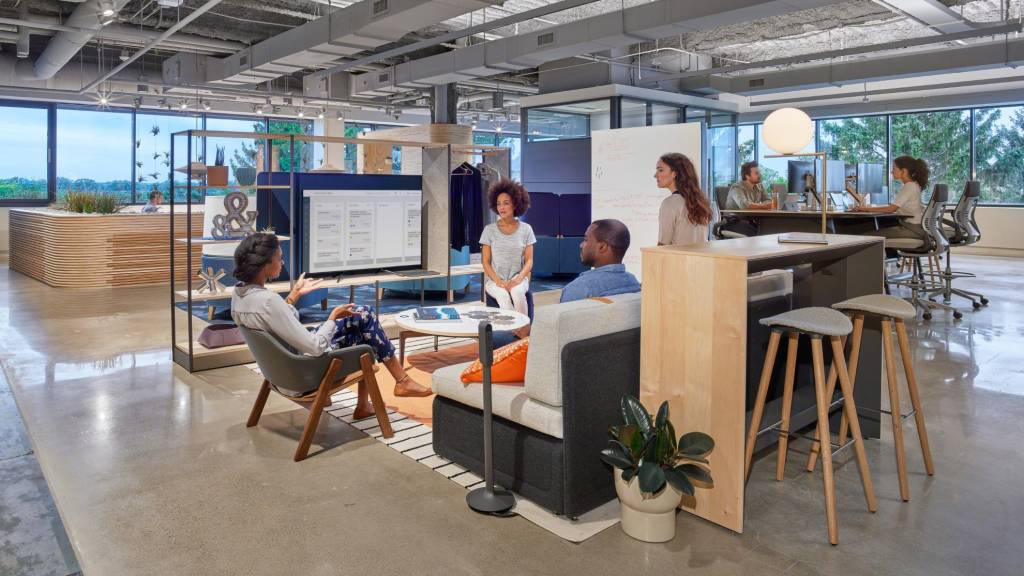
9:00 AM – Daily Stand-Up
They like to gather on their Front Porch for their daily stand-up. This informal spot adjacent to the studio is also owned by the team. Relaxed postures lend themselves to an open, informal conversation to discuss the day’s game plan. Later in the day, they may return to the Front Porch to host business partners or leaders. It allows people to work closely with the team without feeling like they’re intruding on the work happening inside the studio.


9:15 AM – Work Face-to-Face
After the short standup, they usually have a block of time to work together — face-to-face
in their studio. Presence and connection are central to the flow of work enabling real-time collaboration, building team cohesion and developing empathy and trust.
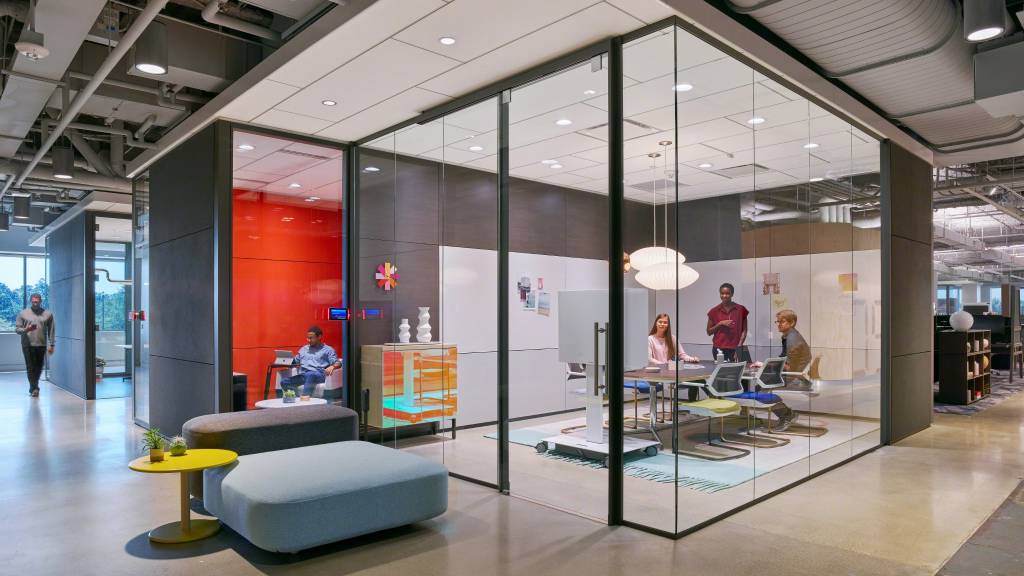
10:30 AM – Customer Connection
Kim connects with an internal business partner from operations to review project criteria, hosting them in an enclosed meeting space just a few steps away from the studio. This area called the Business District includes spaces accessible to everyone. Large meeting rooms, shared enclaves and touchdown spots give Kim’s team plenty of places that support privacy and focus for teams, pairs or individuals while being able to remain near their studio. The transparency of these spaces fosters awareness within and across teams.
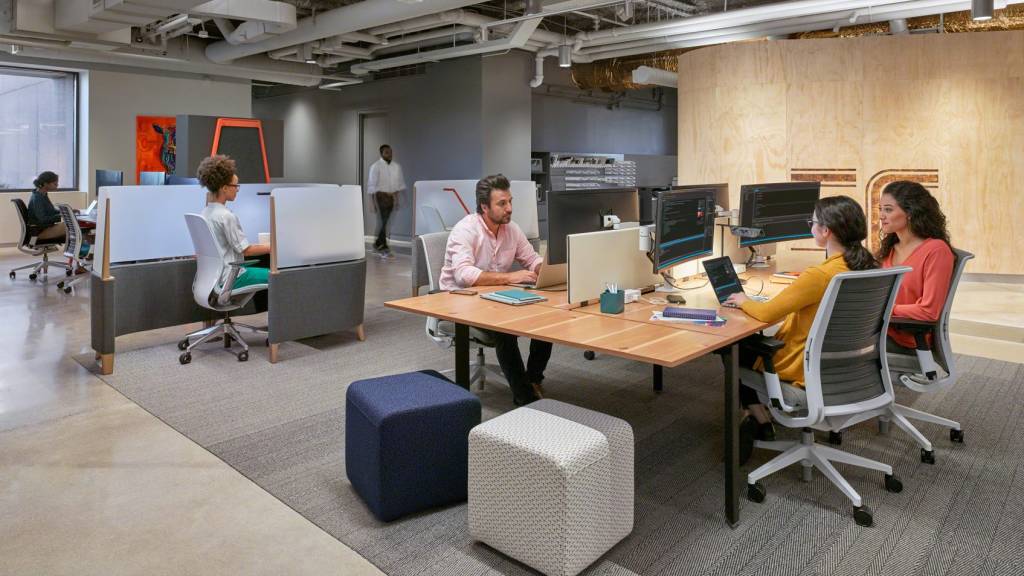
11:00 AM – Camp Here
During their conversation, Kim and her business partner agree — they will need someone from that business unit to work closely with Kim’s team for the duration of the project. She guides them to the Flex Camp. These spaces are available to anyone — allowing the space to accommodate for change just like the agile practice does. People can “camp” here for hours, or over a period of weeks, to be near the agile team, allowing for informal conversations.
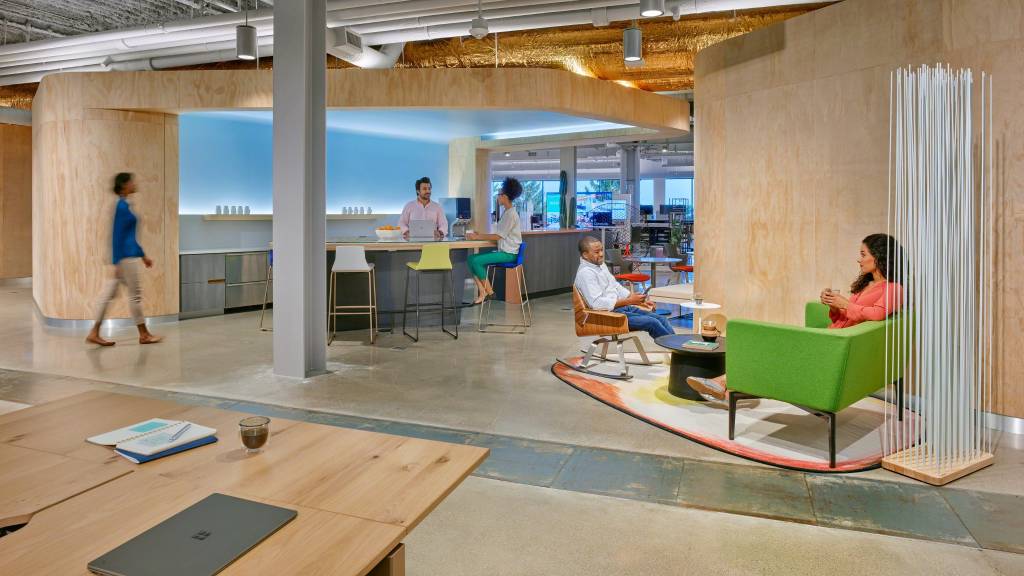
12:00 PM – Café Conversations
Kim uses part of her lunch break to connect with coworkers outside of her team. A central café is a hub for connecting teams, creating new relationships and enriching networks. Running into colleagues on other teams exposes Kim to what’s going on in the rest of the department and helps her learn about other teams’ best practices.
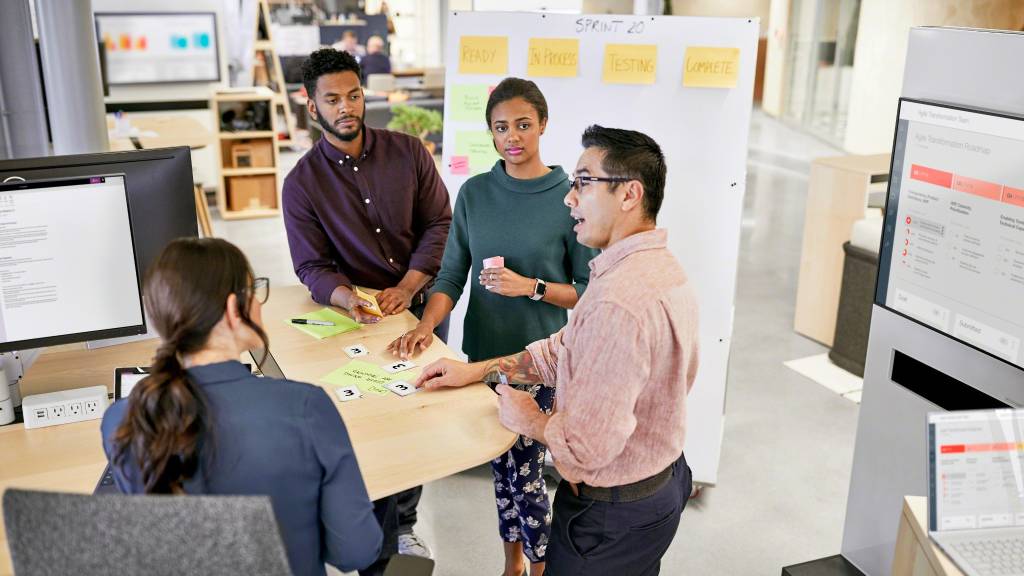
1:00 PM – Project Planning
After lunch, it’s back to the team studio where the team is planning for the next sprint cycle. They’re surrounded by vertical whiteboards and a digital display, which helps them visualize and share their thinking while negotiating the plan for upcoming work. By being immersed in the content, it makes it easy to get up-to-speed quickly and support one another. Interdependencies are made visible, challenges identified and alternative approaches can be considered in advance as teams learn from one sprint to the next.
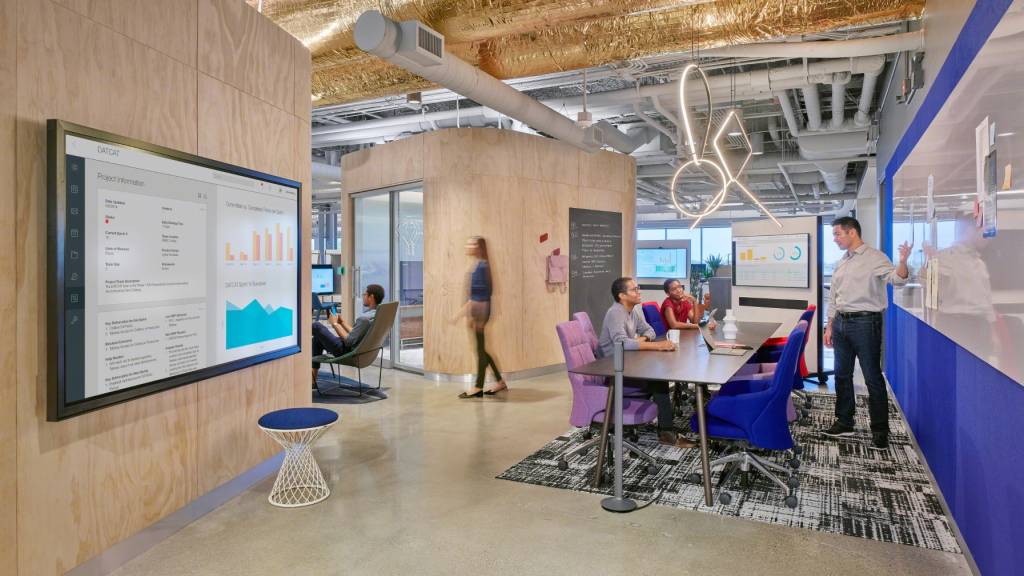
2:00 PM – Break Down Barriers
Today has raised a few questions — Kim’s team needs help eliminating some challenges in their work. The team heads over to the leadership area where leaders are present and accessible. Here, leaders use digital dashboards that scroll through agile teams’ project summaries to foster awareness and visibility. Communication with leaders goes in both directions. Teams are empowered to share their progress and challenges so leaders can advocate for them. Leaders share their strategy in visible ways so the team can see how their work supports the business as a whole.
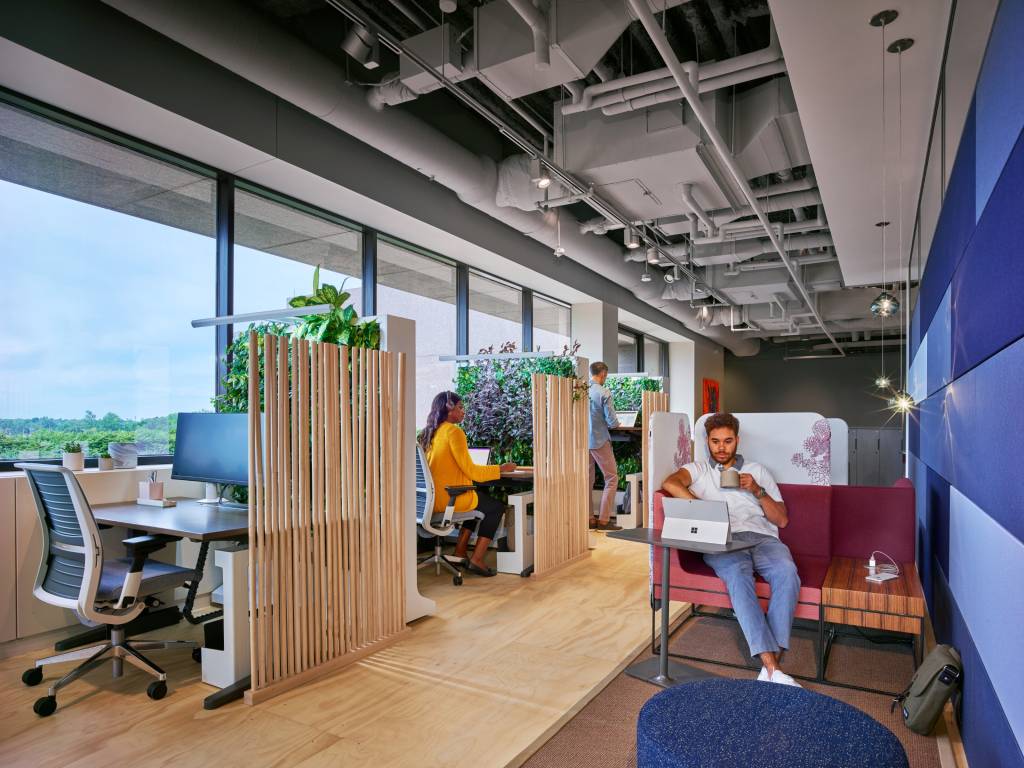
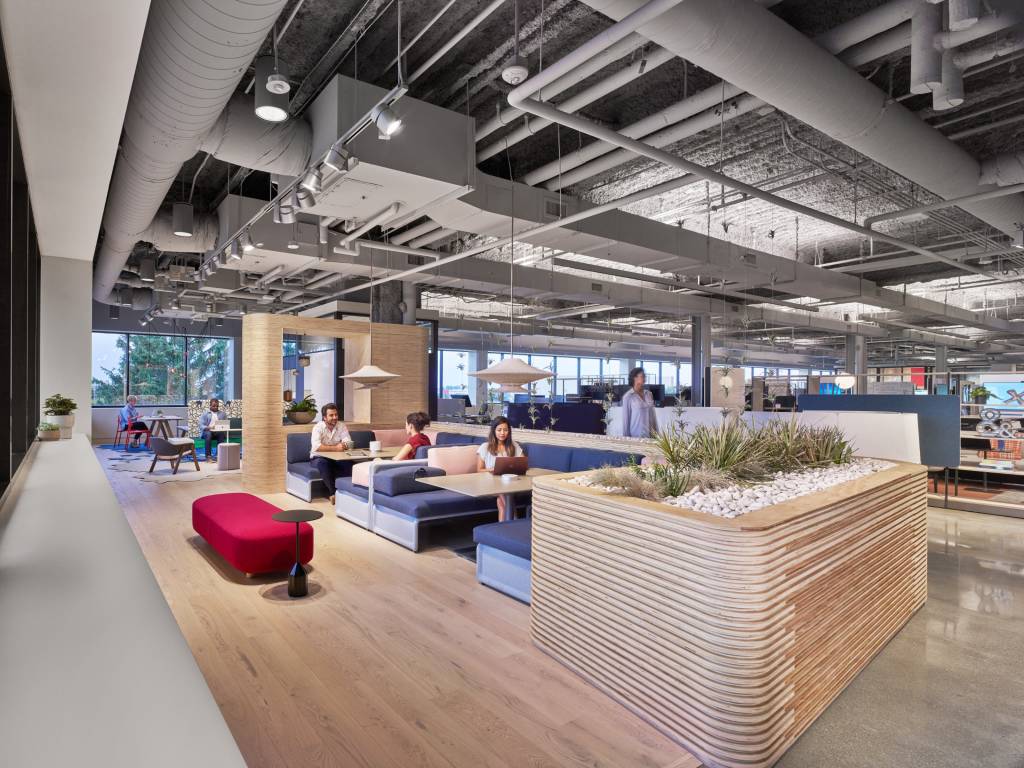
2:30 PM – Re-Energize and Relax
The intense nature of their work means Kim’s team members need a place to get away — without going away. To do so, they often retreat to a spot aptly named the Garden. A break from the typical can help people approach problems in new ways. Individual Garden spaces let people connect to nature and focus away from the team. And collaborative Garden areas offer a spot to socialize and re-energize.
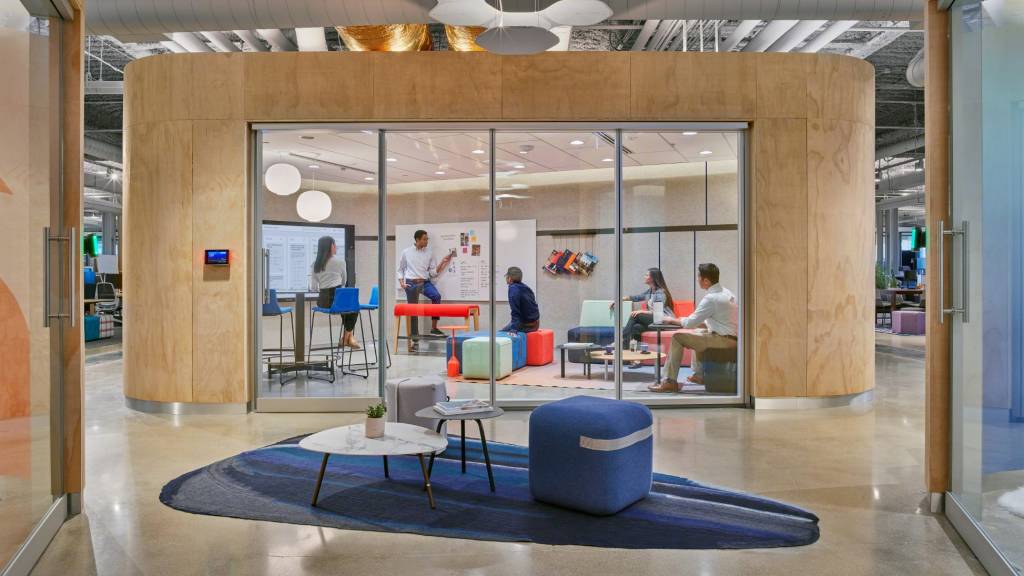
3:30 PM – Comfortable Collaboration
Refreshed and armed with a few new ideas — members of Kim’s team collaborate with a colleague in Portland, Oregon using video-conferencing equipment in one of the shared, central pods. Since more traditional meetings like status updates and problem-solving sessions take place in the team studio, these rooms include relaxed settings and informal postures to create a comfortable vibe that encourages non-traditional meeting behaviors and enhances creative thinking.
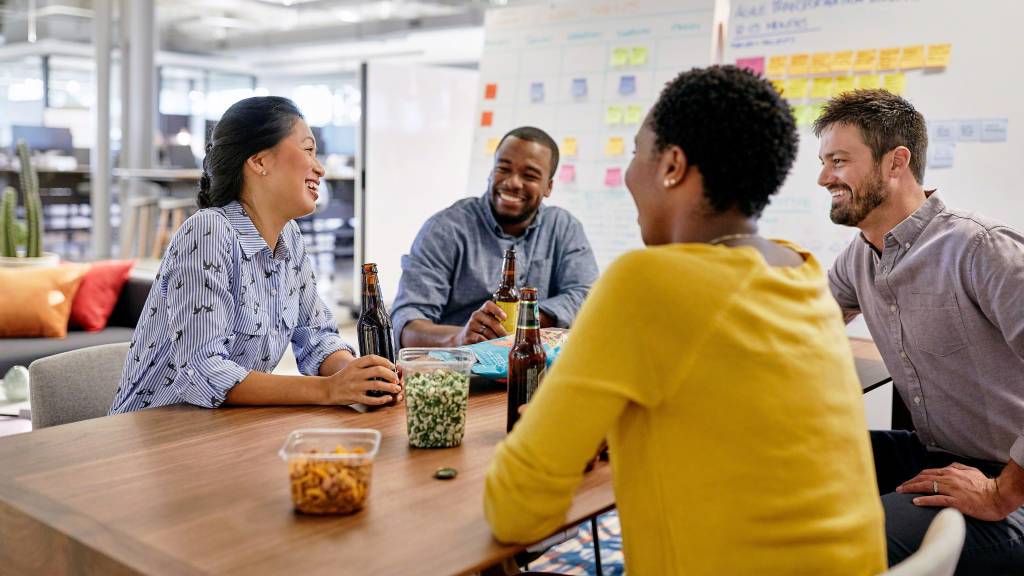
4:30 PM – Team Celebration
Before heading out for the day, Kim’s team takes time for a team celebration — building trust and positive momentum. Their space lets them move from one activity to the next without disrupting the flow of work.
What We’re Learning
Our IT organization is well into its agile journey and now after a few short months of measurement in their new space, early data is available. We have purposefully looked at the intersection of process, culture and place to learn more about enabling a successful agile environment. Measurements so far have come from a variety of sources: sensors, observations, interviews, workshops. In the spirit of agile, we have initial findings we would like to share. We will continue to measure and learn more as we mature our environment. Here are our early learnings:
Learning and Productivity
- 36% increase in velocity. Data shows the workplace helps individuals perform better
- 11% increase in the amount of people who say they have greater choice in the work environment
- 6% increase in people who say they have places to re-energize
- 18% fewer people concerned about access to equipment and tools
- 9% increase in people who say they have access to privacy
Building Stronger Relationships with Customers and Colleagues
- Trust has increased (fewer people are concerned about misunderstandings between colleagues)
- The amount of time people connect with others outside the group has increased
Increased collaboration with external partners and IT customers
Feeling Valued and Connected to Purpose
- Data shows the workplace makes individuals feel more valued by the organization
- Higher accessibility and visibility of leaders with more transparency
- Greater connection to organizational strategy and purpose
- Increase in the number of one-on-ones between with leaders and individuals

